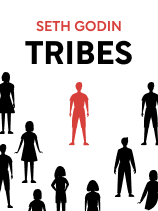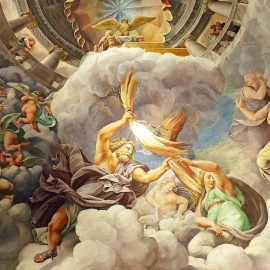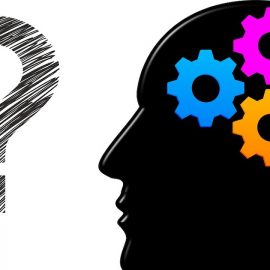

This article is an excerpt from the Shortform book guide to "Tribes" by Seth Godin. Shortform has the world's best summaries and analyses of books you should be reading.
Like this article? Sign up for a free trial here .
What makes any group a tribe? How does Tribes by Seth Godin define a tribe?
Tribes are everywhere. Likely, you’re in more than one. In Tribes, Seth Godin defines a tribe as a group of people connected to a belief, a leader, and each other.
Keep reading to get some insight on the concept of tribes according to Seth Godin’s Tribes—as well as some supplementary ideas and counterpoints from other experts.
What Is a Tribe?
Tribes by Seth Godin is a self-help book about how to create and lead your own tribe—a group of people who are connected by a leader and an idea. Godin contends that, thanks to the ability to connect easily via the internet, there’s never been a better time to build a tribe (or step up to lead an existing one).
An entrepreneur and marketing guru, Godin is perhaps best-known for his book Purple Cow, about how to succeed in business by standing out from the crowd. Much like Purple Cow, Tribes is about coming up with an exceptional idea, then spreading it to the right people in order to make your vision a reality.
In Tribes, Seth Godin defines a tribe as a group of people who share three important connections:
- A connection to a leader
- A connection to a belief
- A connection to the rest of the group
He adds that tribes exist everywhere people come together, whether in-person or online. For example, a fan club is a tribe; so are the employees of a small business. In fact, it’s all but guaranteed that you personally are in a tribe, and most likely more than one.
| The Tuckman Model of Group Formation Seth Godin’s Tribes goes into detail about what a tribe is, but it doesn’t really explain how it comes about. Educational psychologist Bruce Tuckman developed a four-step model to describe how people come together and form a cohesive group, such as a tribe. While Tuckman’s model is specifically about goal-focused teams (such as in a work environment), it also applies to Godin’s concept of tribes, which must form around a particular belief and vision for the future. Tuckman’s four steps are: Forming. This is when people first come together (or are brought together) to create the new group. At this stage, the members of the group have little cohesion and need firm guidance from a leader. Storming. As the members become more comfortable within the group, there will naturally be conflicts among different personalities and ideas. At this stage, people are also frequently frustrated by what they see as a lack of progress toward the group’s objective. The leader must continue to provide guidance. Norming. The intra-group conflicts are (mostly) resolved; the members respect one another and the group leader. The leader can begin to step back and let the group run itself. However, be aware that the group may briefly revert to Storming when new people or tasks are introduced. Performing. At this point, the group is fully integrated and self-sufficient. Members understand one another’s strengths and weaknesses, as well as the goal that they’re working toward. At this point, the leader should let go of the group’s day-to-day business to focus on preventing and solving problems as they come up. Tuckman later added a fifth step: Adjourning. This step is when the group’s job is done and it’s time to disband. However, this fifth step does not apply to tribes, whose “jobs” have no clear endpoint. |
Tribes Have Beliefs
Seth Godin’s Tribes says that, at heart, tribes are about belief: belief in an idea and belief in a community. It doesn’t matter what the belief is—believing that a particular sports team is the best is just as valid to tribe dynamics as believing in a religion or a social cause. What matters is that all members of the tribe share that belief.
Members of a tribe also believe that they belong with each other; that they’re connected by their shared interests. Godin points out that people have gathered into tribes since the earliest days of human history—previously for survival, and more recently for a sense of belonging.
| Not only have humans formed tribes for survival since our earliest days, so have many other species throughout history. In The Selfish Gene, scientist Richard Dawkins explains that many different types of animals band together and help one another. When it’s an issue of survival, animals tend to support those whom they’re most closely related to. However—since modern humans don’t generally need to worry about survival—we now tend to support those who share our ideas, rather than our genes. In other words: Many species, including ours, are genetically wired to seek out and form tribes with each other. |
Tribes Have Partisan Motivation
Tribes are partisan by nature: That is, they see themselves as an “in-group” and others as an “out-group.” Seth Godin’s Tribes asserts that partisanship is part of what motivates a tribe: The members feel special because they’re part of it, and others are not.
While the word partisan has negative connotations (especially in politics), it’s not inherently bad: Partisan groups have strong visions and specific goals that they’re eager to achieve. In other words, partisan groups are naturally motivated.
That motivation is what drives people of a tribe to come together, to share ideas, and to support each other in pursuit of their goal; even if that goal is only to celebrate a favorite sports team or TV show (for example).
If a tribe isn’t motivated, that’s because it’s not committed to a vision—in which case it’s not really a tribe at all.
| Partisanship (in-group vs. out-group) is one of the oldest and most powerful motivators in human psychology: We have a natural drive to support the people in “our” group, and to work against those in “other” groups. An article from Vox examines this natural drive in more detail and from a psychological perspective. It argues that there are two key factors in partisanship: Pride in your group—this is what Godin urges you to harness to make your tribe successful. Fear and hatred of outside groups—the effects of which can range from relatively harmless arguments about TV shows and athletes to high-impact political decisions. |
Beware of Dogma
While tribes form around—and are motivated by—shared beliefs, Godin cautions against allowing those beliefs to calcify into rigid rules. Strict rules stifle innovation and lead to stagnation.
In fact, real leadership and growth happen only when people aren’t constrained by rules and expectations.
| Counterpoint: Rules vs. Freedom This isn’t to say that rules are always harmful, or that they should be avoided at all times. Ideally, rules exist to ensure safety, comfort, and consistency. In No Rules Rules, Reed Hastings and Erin Meyer discuss when rules-based approaches are helpful, and when they’re a hindrance. In brief: If your organization (or tribe) relies on safety and consistent performance, then you’ll find strict rules helpful. This is often the case with hazardous jobs like construction or factory work, or jobs where a mistake could be disastrous, like that of a nuclear engineer. Rules can also protect people’s mental and emotional well-being—for instance, most social media sites have strict rules against racism and hate speech. If you want to promote innovation and growth, then Hastings and Meyer suggest using what they call the “freedom and responsibility” approach. This means that you allow your members the freedom to make their own decisions about what they do and how they behave; however, they must also accept responsibility for the outcomes of those decisions. Taking responsibility means taking credit for what works well, but also working to fix any harm they cause. If their behavior is particularly egregious, taking responsibility could even mean leaving the tribe, or being expelled from it. |
In Tribes, Seth Godin makes it clear how and why tribes are very much part of our lives.

———End of Preview———
Like what you just read? Read the rest of the world's best book summary and analysis of Seth Godin's "Tribes" at Shortform .
Here's what you'll find in our full Tribes summary :
- What tribes are—and why we need them
- How to create and lead a tribe effectively
- Why we need leaders today more than ever






